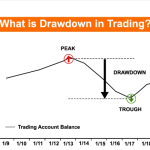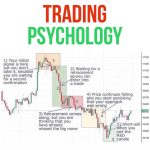
By ATGL
Updated November 27, 2024
Investors have a plethora of strategies to choose from when navigating the financial markets. Swing trading, characterized by its short- to medium-term approach, is one such strategy aimed at capturing price movements over several days or weeks. But how does one evaluate whether swing trading is a viable and superior option compared to traditional approaches like Buy and Hold with the S&P 500? This article provides a comprehensive framework for assessing swing trading using key financial metrics like volatility, Sharpe ratio, turnover ratio, drawdown, and standard deviation.
Understanding Swing Trading
Swing trading relies on technical analysis and market momentum to capitalize on price swings within a defined time frame. Unlike long-term strategies, it requires active management and frequent monitoring of market trends. Traders often use tools like moving averages, the Relative Strength Index (RSI), and volume analysis to make decisions.
While swing trading seeks to maximize gains in trending or volatile markets, its short-term nature sets it apart from Buy and Hold, which focuses on accumulating wealth steadily over time. The benchmark strategy, often represented by investing in the S&P 500, is known for its simplicity and lower turnover ratio, making it ideal for long-term investors.
Criteria for Evaluating Swing Trading
To assess whether swing trading aligns with your financial goals, consider the following criteria:
1. Risk-Reward Ratio
Swing trading’s success hinges on achieving a favorable risk-reward ratio, typically aiming for a higher potential gain than the risk assumed per trade. In contrast, the Buy and Hold approach with the S&P 500 carries inherent market risk but benefits from historical upward trends over decades.
Key Metrics:
- Sharpe Ratio: Measures risk-adjusted returns. A higher Sharpe ratio indicates that a strategy offers better returns per unit of risk. Swing trading strategies often target a Sharpe ratio above 1.5, whereas the S&P 500 historically hovers around 1.0.
- Drawdown: Swing trading may have frequent small drawdowns due to tighter stop-losses, while the S&P 500 may experience infrequent but significant drawdowns during market crashes (e.g., 2008 or 2020).
2. Volatility and Standard Deviation
Swing traders thrive on volatility, as price fluctuations create profit opportunities. However, higher volatility also means increased risk. The S&P 500’s standard deviation, which typically ranges between 15% and 20% annually, serves as a baseline. Swing trading strategies may exceed this, depending on the assets traded.
Considerations:
- Evaluate whether you can tolerate the higher volatility of swing trading compared to the steadier returns of Buy and Hold.
- Use historical data to calculate the standard deviation of returns for your swing trading system.
3. Turnover Ratio
Swing trading involves frequent buying and selling, leading to a high turnover ratio. This can result in increased transaction costs and tax liabilities. In contrast, the Buy and Hold strategy minimizes turnover, reducing these expenses.
Benchmark:
- S&P 500 Turnover: Less than 5% annually for passive index funds.
- Swing Trading Turnover: Can exceed 100% annually due to frequent position changes.
4. Historical Performance
Backtesting swing trading strategies against historical data is essential to gauge their reliability. Compare the strategy’s annualized returns to those of the S&P 500, which has averaged approximately 10% annually over the long term.
Key Insights:
- Assess whether the strategy consistently outperforms the S&P 500, especially after accounting for fees and taxes.
- Ensure the strategy’s win rate (percentage of profitable trades) aligns with your financial goals.
5. Time Commitment
Swing trading demands active engagement, including monitoring charts, analyzing data, and executing trades. The S&P 500’s Buy and Hold approach, on the other hand, requires minimal time investment, making it ideal for passive investors.
Tools and Resources for Evaluation
Evaluating swing trading requires reliable tools and resources, including:
- Technical Analysis Software: Tools like TradingView or MetaTrader offer advanced charting features and backtesting capabilities.
- Market Data Services: Platforms like Bloomberg or Yahoo Finance provide access to historical data for performance analysis.
- Trading Journals: Maintaining a record of trades helps identify patterns and refine strategies.
- Communities and Mentorship: Engaging with experienced traders through forums or mentorship programs can provide valuable insights.
Key Questions to Ask Yourself
Before adopting swing trading, ask:
- Does swing trading align with my financial goals and risk tolerance?
- Am I comfortable with the strategy’s higher turnover and tax implications compared to the S&P 500?
- Do I have the time and discipline to monitor markets and execute trades effectively?
- Can I manage the emotional stress of frequent decision-making and potential losses?
Risks and Challenges of Swing Trading
Swing trading poses unique risks that must be managed:
- Overtrading: Frequent trades can lead to excessive fees and reduced net profits.
- Emotional Decision-Making: Reacting to market noise can derail a strategy.
- Market Risks: Unexpected news or events can lead to sharp price movements, causing losses.
Mitigating these challenges requires strict adherence to risk management rules, including setting stop-loss orders and diversifying trades.
Comparison with Buy and Hold
Advantages of Swing Trading:
- Potentially higher returns in volatile markets.
- Opportunities for quick profits from short-term trends.
- Flexibility to exit positions during market downturns.
Advantages of Buy and Hold:
- Lower costs due to minimal turnover.
- Tax efficiency, especially with long-term capital gains rates.
- Historically reliable returns from the S&P 500 over the long term.
Tips for Beginners
If you’re new to swing trading:
- Start Small: Begin with a demo account or a small portion of your capital to minimize risk.
- Master the Basics: Focus on a few reliable setups, such as breakout or pullback strategies.
- Leverage Technology: Use automated alerts and trading tools to streamline decision-making.
- Educate Yourself: Continuously learn about market trends and improve your skills.
Leverage Above the Green Line to Elevate your Trading
Evaluating an investment strategy like swing trading requires a comprehensive understanding of its risks, rewards, and demands. Metrics such as volatility, Sharpe ratio, turnover ratio, and drawdown provide valuable insights into its viability. While swing trading offers the potential for higher returns, it also demands greater time, skill, and emotional resilience compared to the passive Buy and Hold approach with the S&P 500.
Ultimately, the best strategy is one that aligns with your financial goals, risk tolerance, and lifestyle. Whether you choose swing trading or stick with the S&P 500, a disciplined and informed approach is key to long-term success. Join Above the Green Line today and let us help you elevate your investing.






